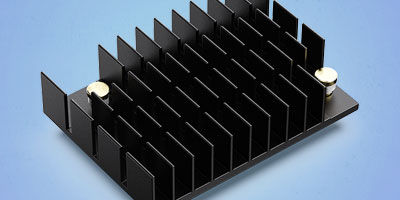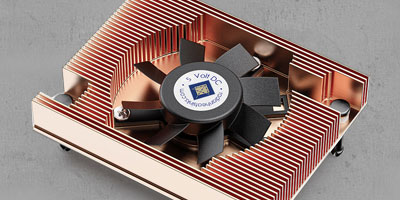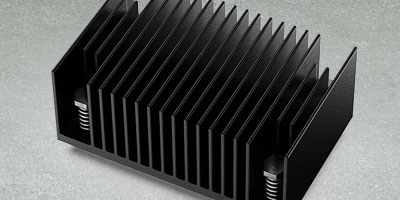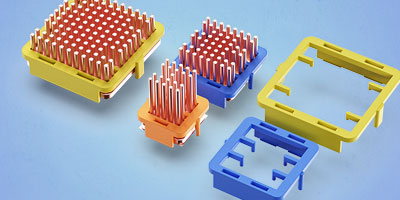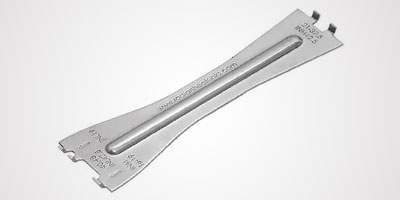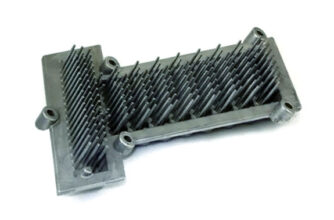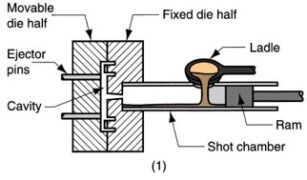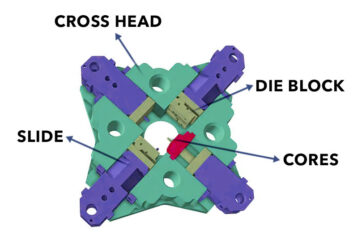A diecast heatsink uses the cast process by forcing molten metal under high pressure into a molded cavity. The molded cavity of the diecast heatsink is created using a hardened tool steel die which is carefully machined into a predesignated shape. The casting equipment and the metal dies represent large capital cost which tend to limit the process to high volume production applications.
Radian’s diecast heatsink utilizes a hot-chamber die casting process which relies upon a pool of molten metal to feed the die. A pneumatic or hydraulic powered piston forces molten metal into the die. The advantages of this system include fast cycle times (approximately 15 cycles a minute). Radian diecast heatsinks are primarily manufactured using aluminum based alloys (356.0, A380).
